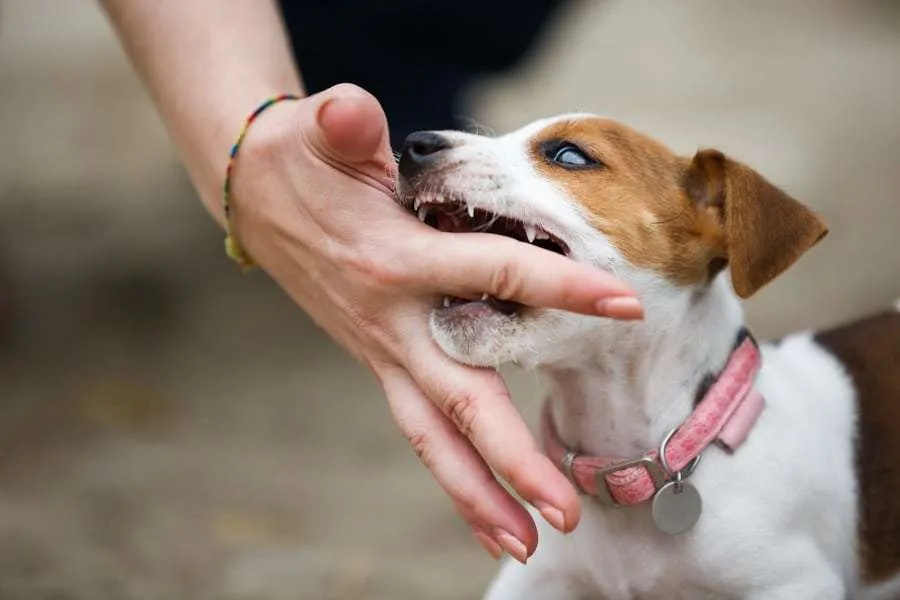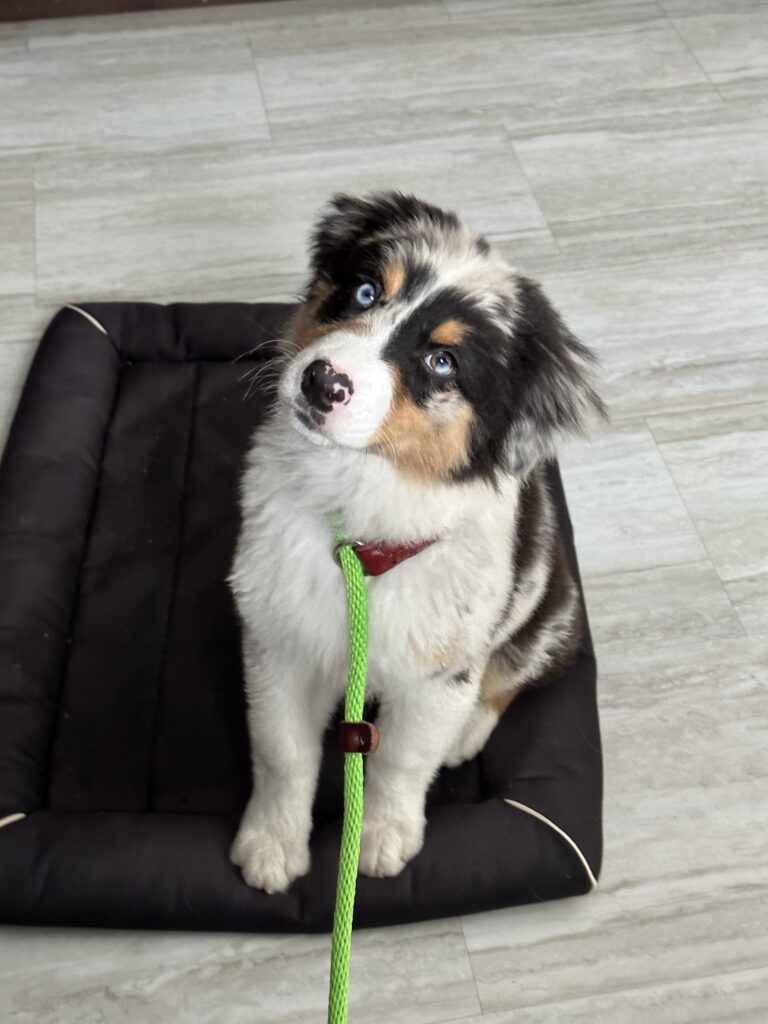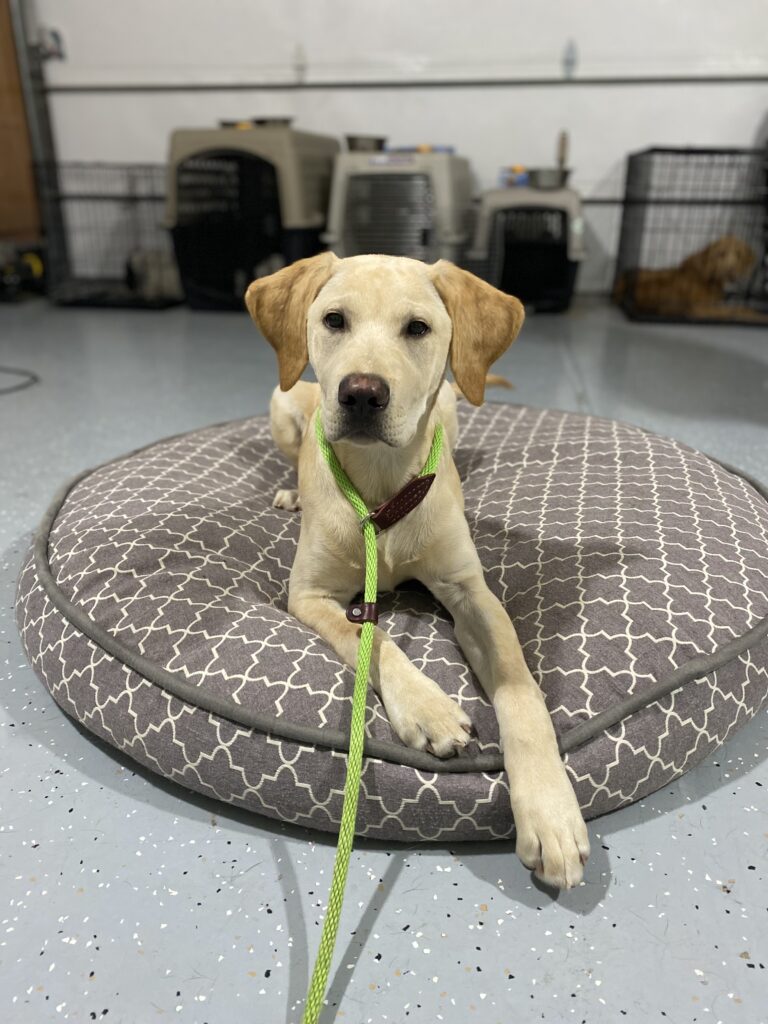Puppy Training Principals Podcast
Episode 70: Help! My dog is so nippy!

Do you have a dog that is nippy? Jason answers some common puppy nipping questions for both a young puppy and an older dog!
My Son Discovering He Can Get a Reaction From Me
We have a 2-year-old son that is in such a fun stage! I’ll be pushing him in a swing and then go around to be in front of him. I’ll act like when his swing comes toward me, it knocks me over. He thinks it’s so funny; he just belly laughs. Oh, I love those 2-year-old belly laughs!
He will hide behind his hands and when he pulls his hands away, say “Boo!” It makes us laugh and he thinks it’s the greatest thing. So much so that he belly laughs, again and again.
Or I’ll throw him up in the air. At first, it’s kind of alarming and takes his breath away, but within a few seconds they’re begging to do it again.
It seems there’s a shift at around this age where they realize they have the power to impact your reaction to something. They get really excited about it. Their brain begins to understand that they can push a certain button, and that causes a certain result. They seem to love that feeling of exercising this new-found ability.
16-Week-Old German Shepard Dog That is Nippy and Biting
Today I’m answering a couple questions we’ve had recently.
The first is from Debby who has a 16-week-old German Shepard puppy that has suddenly become very nippy. So what do we do with a nippy dog that is that young? At 16 weeks old, puppies start to come out of their shell. Before this age, puppies sleep a lot and when awake generally want to hang around you. Your puppy may even be heeling with you on walks without any effort on your part.
But then 16 weeks comes around and suddenly your puppy wakes up, wants to explore, becomes even more nippy, and is harder to control. That’s normal, but it can be tough!
If your puppy is chewing on everything in sight, you may think they just HAVE to chew. So you give them more dog toys to chew on. This will only partly work to lessen the behavior, if it helps at all. Giving your puppy something else to chew just kicks the can down the road.
Although common, this excessive chewing and nipping is a behavioral problem that should be addressed. Yes, your puppy may be teething and have a desire to chew on something, but it’s usually more than just a physical thing. Don’t brush it off as “just a stage,” and allow them to go wild and bite on you and your family until they’re drawing blood.
Your Puppy Needs Direction
Your puppy also needs to be given direction (in a way a dog understands) what’s okay and what’s not okay. Your dog needs to know that being nippy is not okay. With our program, the way we use to communicate with our puppy is through a slip lead.
Through pressure/release on the leash, you can communicate that it’s not okay to bite people’s legs, for example. Being able to tell our dogs no is a beautiful thing. It saves so much heartache for both you and your dog.
At around 10:00 into the podcast, I explain how exactly to do this, so go take a listen!

Cornerstone Puppies sporting the type of slip lead we prefer to use

Just like my 2-year-old son, puppies at this age love to feel strong. They love the power they get from doing certain things and getting certain reactions. So let’s give that new-found desire to step out of their shell headed in a positive direction.
An 8-month-old Dog Who is Incessantly Biting and Nippy
On to question 2.
Gabriella asked about her 8-month-old lab who is biting and nipping incessantly at everyone and everything. Gabriella sent us a video, and we would agree. It’s incessant. The nipping we see in the video is starting to become more of the dog feeling like he can push his owners around and get whatever he wants.
It’s interesting that these questions came in back to back. I believe this second question really reiterates the fact that if you don’t correct the nipping as a puppy, it may not just “go away.”
Dogs Over 5 months Do Better With Different Tools
At 5 months, you still use the same technique (pressure/release), but the dog is ready to graduate to a different tool. We like to use a prong collor. The only brand we use is Herm Sprenger.
In the podcast, I go into how to use the prong collor and how we use it not only for correction, but for direction as well. There is so much value in being able to tell your dog no. It saves you AND your dog from a lot of confusion and frustration.
Using a high-quality prong collor with correct technique makes it easy to communicate with your dog. You can clearly and easily say no and direct your dog to know what you want instead. And you can do all that without getting angry or emotional at all. Let the tool do the talking and you’ll both be happier.
The Positive-Only Game
In the podcast, I also talk about a game I used to play with students in my classroom to demonstrate the usefulness of the word no. In the game, one student would play the part of the dog and the other the trainer. Listen in around 22:39 and try playing the game at home with your family. It’s fun!
Dog Training Questions Welcome
As always, thank you for reaching out with your questions! We’re always happy to chat about them. And who knows, maybe we’ll make a podcast out of your question as well! Email us admin@cornerstonedogtraining.com.
God bless and happy training!
Podcast overview:
1:49 We have a puppy book! This is for dogs under 5 months old! www.cornerstonepuppy.com/info
3:04 German Shepard biting at 16 weeks. 4months is when dogs start to really come out of their shell!
8:23 Training will help! Impulse control is key.
9:45 Correct the puppy! Use a slip lead to communicate with the puppy. Tight then loose and the dog will start to learn that this behavior is not acceptable.
12:02 Let the puppy determine the level. Look to instagram for a video to show the technique.
14:00 Jason talks about a lab that has serious issues with biting and nipping at 8 months old.
16:10 Principle based training works anywhere.
17:23 Opposition reflex. Dogs feel pressure and push against it.
19:20 Dogs will do it more if they see its getting a reaction out of you. So we need to set boundaries and correct the dog when they do it. Any tool used incorrectly is a bad tool so make sure if you are going to use a slip lead or prong collar you watch or learn how to use it!
22:39 There is value in the word no!
+ show Comments
- Hide Comments
add a comment